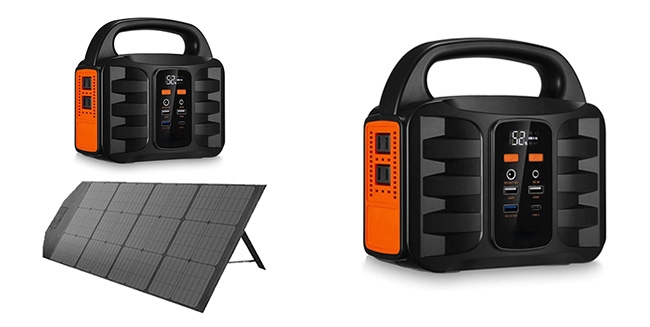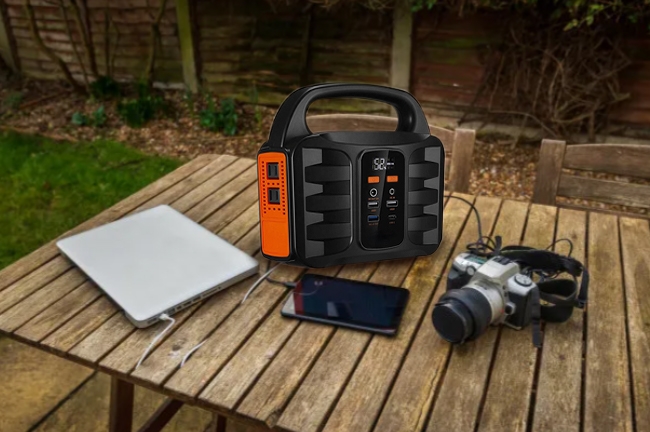In recent years, portable solar generators have become increasingly popular among outdoor enthusiasts, emergency preparedness advocates, and eco-conscious consumers. These compact, eco-friendly devices offer a reliable power source by harnessing energy from the sun. However, a common question arises among many buyers: "How long does a portable solar generator last?" To answer this, we must consider several factors, including battery life, durability, maintenance, and technological advancements. This article will explore these factors in detail to provide a comprehensive understanding of the longevity of portable solar generators.
Understanding portable solar generator:
A portable solar generator typically consists of solar panels, a battery, an inverter, and various charging ports. The solar panels capture sunlight and convert it into electricity, which is then stored in the battery. The inverter converts the stored energy into a usable form, such as AC or DC power, to run electrical devices. The generator's lifespan is influenced by the durability and performance of these components.

The lifespan of each part:
- Battery Life. The battery is arguably the most critical component in determining the lifespan of a portable solar generator. Most solar generators use either lead-acid or lithium-ion batteries.
- Lead-Acid Batteries. Lead-acid batteries are the traditional choice and are generally less expensive. However, they have a shorter lifespan compared to lithium-ion batteries. On average, lead-acid batteries can last between 500 to 1,000 charge cycles. A charge cycle is defined as the process of charging a battery from 0% to 100% and then discharging it back to 0%. In practical terms, if you use a lead-acid battery daily, it might last about 1.5 to 3 years.
- Lithium-Ion Batteries. Lithium-ion batteries are more modern and offer several advantages over lead-acid batteries, including a longer lifespan, lighter weight, and higher efficiency. Lithium-ion batteries typically last between 1,000 to 2,000 charge cycles. Some high-quality lithium-ion batteries can even reach up to 3,000 charge cycles. This translates to a lifespan of about 3 to 7 years with regular use.
- Battery Maintenance. Proper maintenance can significantly extend the life of the battery in a power solar generator. This includes keeping the battery at optimal temperatures, avoiding overcharging or deep discharging, and ensuring it is stored in a dry, cool place. Regularly using the battery also helps maintain its health, as prolonged inactivity can lead to capacity loss.
- Solar Panels. The solar panels in a portable solar generator are responsible for capturing sunlight and converting it into electrical energy. The longevity of solar panels is generally impressive, with most high-quality panels lasting between 20 to 25 years. However, for camping solar generators, the panels might face more wear and tear due to frequent movement and exposure to various weather conditions.
Factors affecting service life:
- Panel Durability. Portable solar panels are designed to be more robust and resilient compared to stationary panels. They are often made with durable materials that can withstand impacts and resist water and dust. Despite this, the efficiency of solar panels can degrade over time, usually at a rate of about 0.5% to 1% per year. This means after 20 years, the panels might still operate at around 80% to 90% of their original efficiency.
- Inverter and Electronics. The inverter and other electronic components within a portable solar generator are also crucial for its overall longevity. High-quality inverters can last between 10 to 15 years. However, cheaper models might need replacement every 5 to 10 years. The durability of these components is essential, as a malfunctioning inverter can render the generator useless until it is repaired or replaced.
- Overall Durability. The overall build quality of the solar-powered generator significantly impacts its lifespan. Models with sturdy, weather-resistant casings are better suited for outdoor use and can withstand the elements more effectively. Additionally, generators with quality connectors and wiring are less likely to suffer from electrical failures.
- Technological Advancements. As technology advances, newer portable solar generators are becoming more efficient, durable, and reliable. Innovations in battery technology, such as the development of solid-state batteries, promise even longer lifespans and improved performance. Moreover, improvements in solar panel efficiency and inverter technology continue to enhance the overall longevity and functionality of these devices.
- Real-World Usage. The actual lifespan of a solar panel generator can vary based on how it is used. For instance, a generator used for occasional camping trips might last significantly longer than one used daily as a backup power source. Environmental factors, such as extreme temperatures and humidity, can also affect the longevity of the components. Regular maintenance, proper storage, and mindful usage are key to maximizing the lifespan of a solar inverter generator.

The lifespan of a powerful solar generator depends on several factors, including the type of battery, the quality of the solar panels, the durability of the inverter and other electronic components, and how well the device is maintained and used. In Inverter Store, we provide high quality solar generators for you, such as 300W, 500W, and so on. On average, a high-quality portable solar generator can last anywhere from 5 to 15 years, with solar panels continuing to function at a reduced efficiency for up to 25 years. With proper care and attention, these eco-friendly power solutions can provide reliable energy for many years, making them a worthwhile investment for those seeking sustainable and portable power options.
